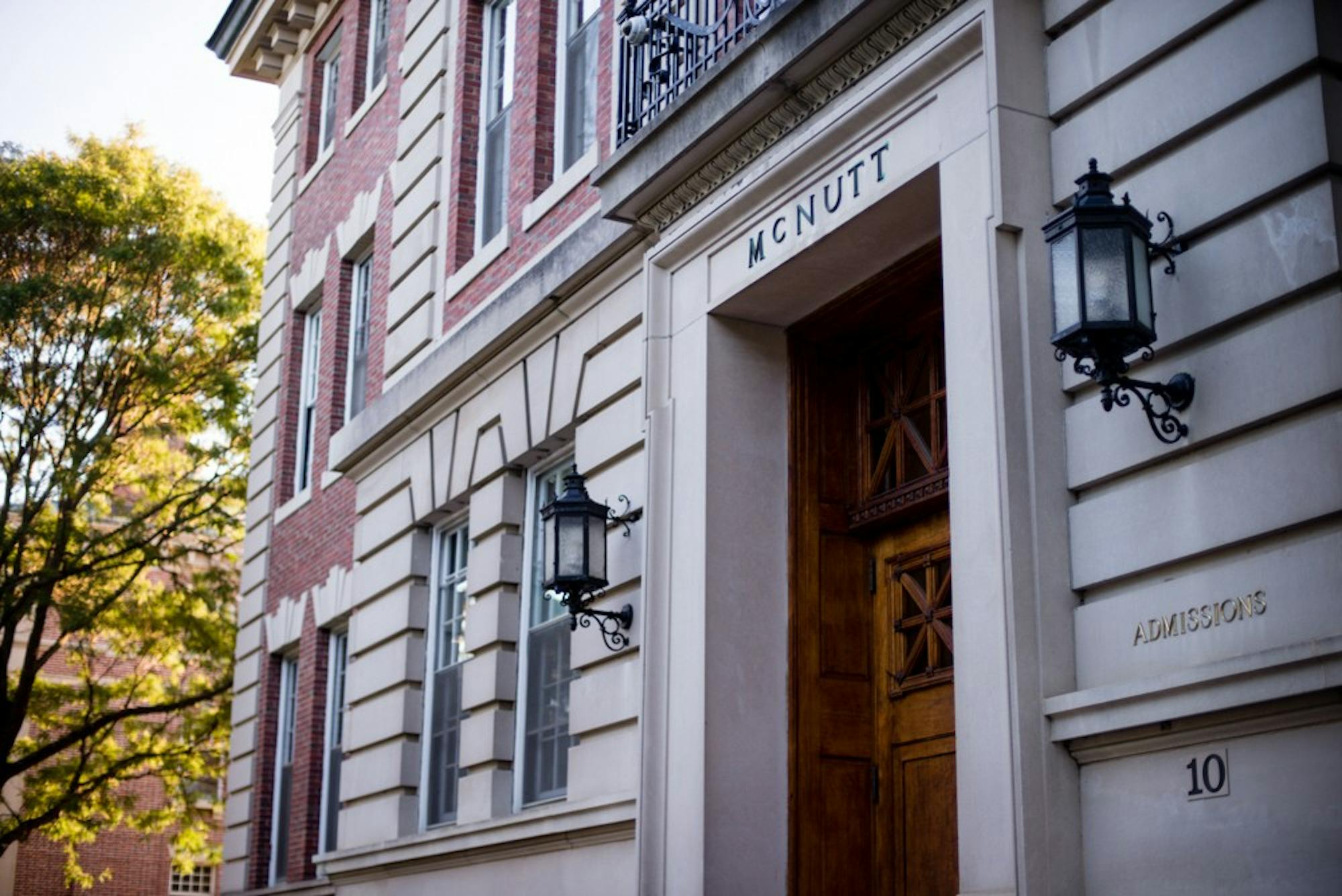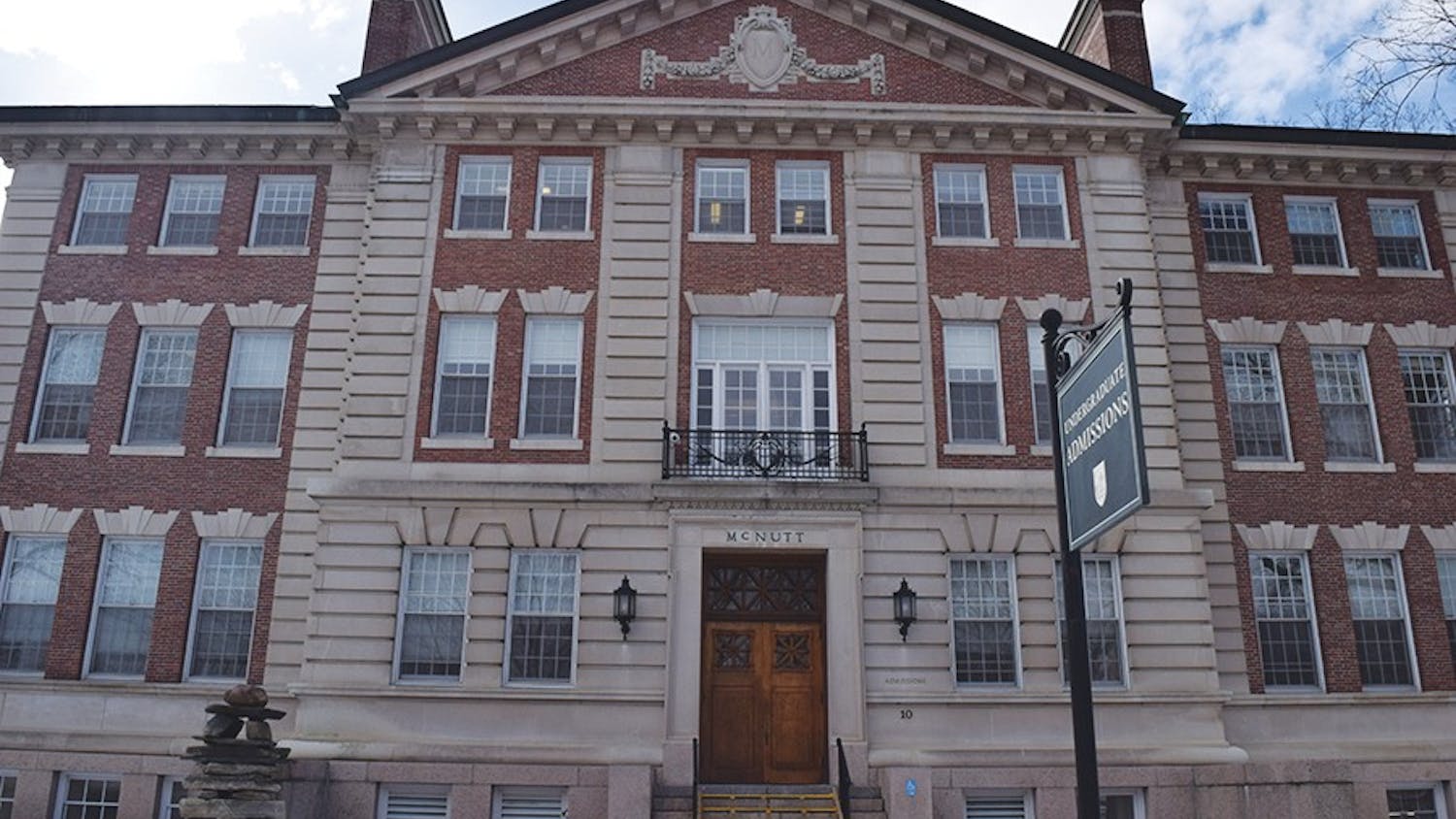The College earned what dean of admissions and financial aid Lee Coffin referred to as the “triple crown” of admissions this year, setting three institutional records. In addition to the largest application pool for the first time since 2012 and the lowest admit rate in College history, 7.9 percent, the Class of 2023 also boasted Dartmouth’s highest final yield rate: 64 percent, up from 61 percent last year and 58 percent for the Class of 2021. The yield rate represents the portion of students offered admittance to the College who eventually chose to attend Dartmouth.
While Coffin believes that these rankings are important as “measures of institutional health” for the Board of Trustees, he said he does not consider the numbers as a framework for the way he thinks about the admissions process. For Coffin and his team, while the admissions process may disproportionately center on numbers and rankings, the year-long process of recruitment and selection can best be described as holistic. Senior associate director of admissions Isabel Bober ’04 sees the idea of “holistic process” — a tenet of Dartmouth’s and many of its peer institutions’ admissions — as a “combination between data and voice.”
The admission office’s 24 staff members read each individual application submitted by prospective members of the Class of 2023. Each staff member is assigned a geographic recruitment area and focuses on applications from within this area. This allows the staff member to become familiar with local high schools and guidance counselors, testing norms and attitudes in their assigned communities, according to Coffin.
Next, during the month of March, committees of six meet to discuss applications. Each staff member presents the applications of note within their larger applicant pool.
“It’s like a jury: You’re presenting the evidence that your applicants have shared, and the rest of us are listening without having read that particular student,” Coffin said.
Coffin said that during the committee stage, the staff members are focused on the “shaping” of the class and trying to form a “heterogeneous” community. The members of the committees shift throughout the process in order to expose staff members to applicants from various global zones.
Bober noted that bringing applicants to the committee stage ensures many points of view on a candidate.
“There is a tremendous amount of empathy, bias checking, conversation,” Bober said. “These are decisions we come to jointly, because the way that I interact with a piece of writing [in an application] can be different than [that of a colleague].”
At the end of March, the committees present Coffin with a group of recommended applications. Coffin and a senior committee of about eight staff members review these applications to finalize the list and organize the applicants into an admitted group and a waitlisted group.
“At this level, the line between the admit group and the waitlist is fuzzy,” Coffin said. “And … the line between the people who didn’t get in and the waitlist is fuzzy.”
Coffin expressed that there are many challenges in culling down such a large pool of qualified applicants at such a small school as compared to others in the Ivy League, calling the process “humbling.”
Coffin said that his role as dean is to take a “macro” view of the class and determine whether there is a balance between geographic locations, gender identity, racial, ethnic, religious and other identifiers, asking certain readers for more of one type of candidate or letting readers know when a certain part of the class is “full,” such as students interested in the STEM field.
Coffin said he often asks himself and the committees, “What voice does this person bring to this community?” He says that if the voice is underrepresented, they elevate the application, in order to create a class with a diversity of views.
Bober said that although test scores and grades are what many people focus on with regards to admissions, 80 to 90 percent of the applicant pool has data that indicate that they would be academically prepared for Dartmouth. Coffin agreed, and noted that standardized tests are used largely for the purpose of contextualizing grades across high schools.
But Bober and Coffin both noted that they look past the data for students who want to think outside the box and embrace change. Bober said these are good skills, not only for navigating a liberal arts institution, but also the rest of a student’s life. Some of the qualities they look for in applicants come from discussions with faculty members about what kind of students are successful at Dartmouth.
“People can get an A without being curious, and when curiosity is there, it animates the classroom in a really powerful way,” Coffin said.
Coffin added that a student’s voice comes across best in the application’s supplement questions, which help gauge qualities like kindness, willingness to try new things and curiosity, and that the peer recommendation is also a valuable and unique part of the Dartmouth application.
This entire process yields not only the newest class of Dartmouth students but also a flurry of admissions numbers. While these numbers fail to fully describe the holistic nature of the admissions, they do offer insights into the admissions process and outcomes.
Of the 1,193 members of the Class of 2023, students hailed from all 50 states, Coffin said, with the largest portion — 11 percent — coming from California. A total of 41 percent of students come from either the West Coast or the South of the United States. Twelve percent of students live outside of the United States, hailing from 51 different countries, according to Coffin. Coffin added that 210 students are recruited athletes, 17.6 percent of the Class of 2023.
Additionally, 42 percent of United States citizens are people of color and 25 native tribe and indigenous communities are represented among the freshman class, according to Coffin.
Coffin said he was especially proud of the 15 percent of the Class of 2023 who are the first in their families to attend College, having increased from around 140 students last year to around 180 students this year.
Eighteen percent of the class comes from low-income families, meaning they are either eligible for the federal Pell Grant, part of the Deferred Action for Childhood Arrivals program or international students with an equivalent financial background, according to director of financial aid Dino Koff.
Koff noted that 45 percent of the class is on scholarship and 52 percent will receive aid of some kind, including loans. He said that about half of international students will receive financial aid. The ’23s will receive a record total of $29.5 million in aid, though this number may rise as the class settles in. This is up from last year’s $27.8 million total.
Coffin said he was pleased with this year’s expansion of first-generation and lower-income students, and said he would continue to work to expand the portion of the class hailing from low- and middle-income backgrounds. He also said the office is increasingly reaching out to new areas of the United States and the world, focusing on places with growing populations that have not been historically emphasized in the recruitment process.
Correction appended (Sept. 20, 2019): This article originally stated that the applications of recruited athletes are not reviewed by the admissions office, when they in fact are reviewed by the admissions office.



